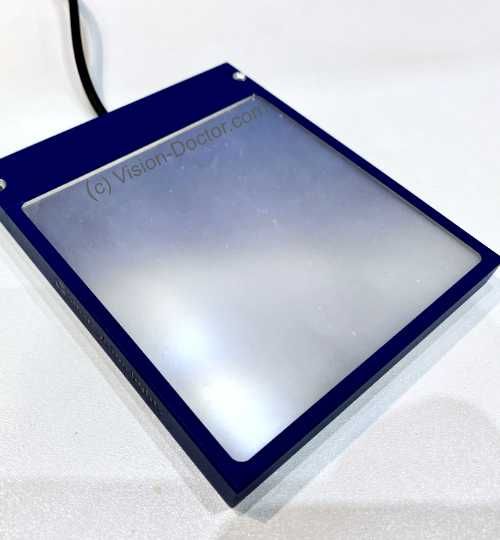




















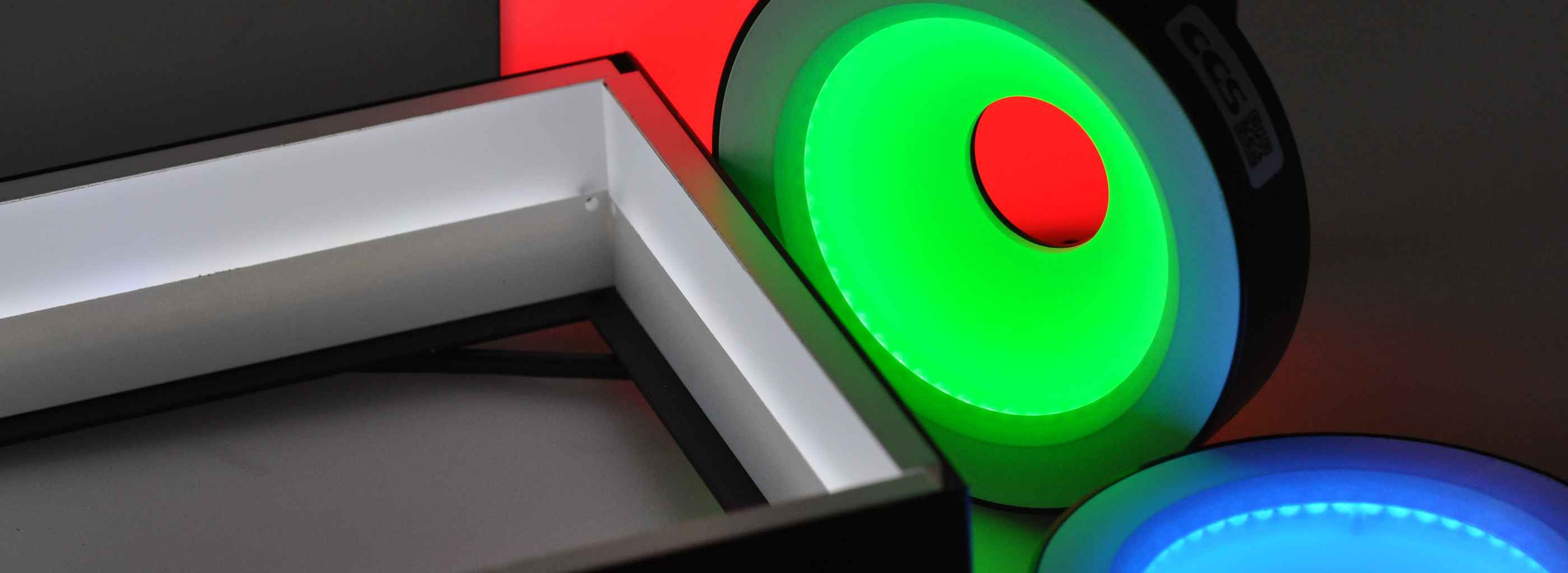
The camera then only sees the component as a black object with its outline. In this way, the external dimensions of the component can be detected very well.
The component itself is only visible as a silhouette; no further information about the component surface can be obtained. The surface surrounding the component is the illumination into which the camera system looks. This massive excess of light makes the entire application relatively immune to extraneous light.
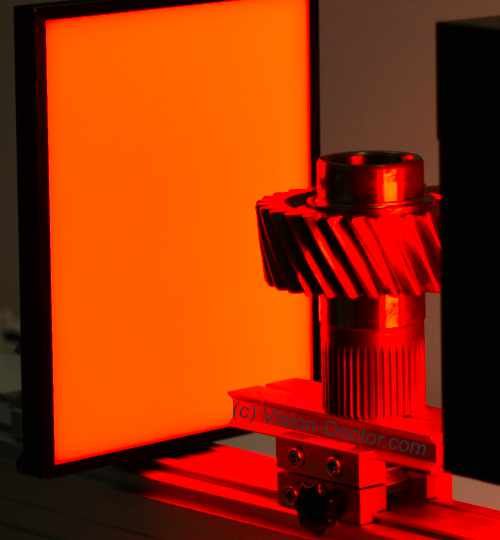

Be careful: The edges of the image on the left are already clearly shaded. This can lead to measurement inaccuracies when edges in light and dark areas are measured together.

In order to achieve the best measuring results, background illumination is used which...
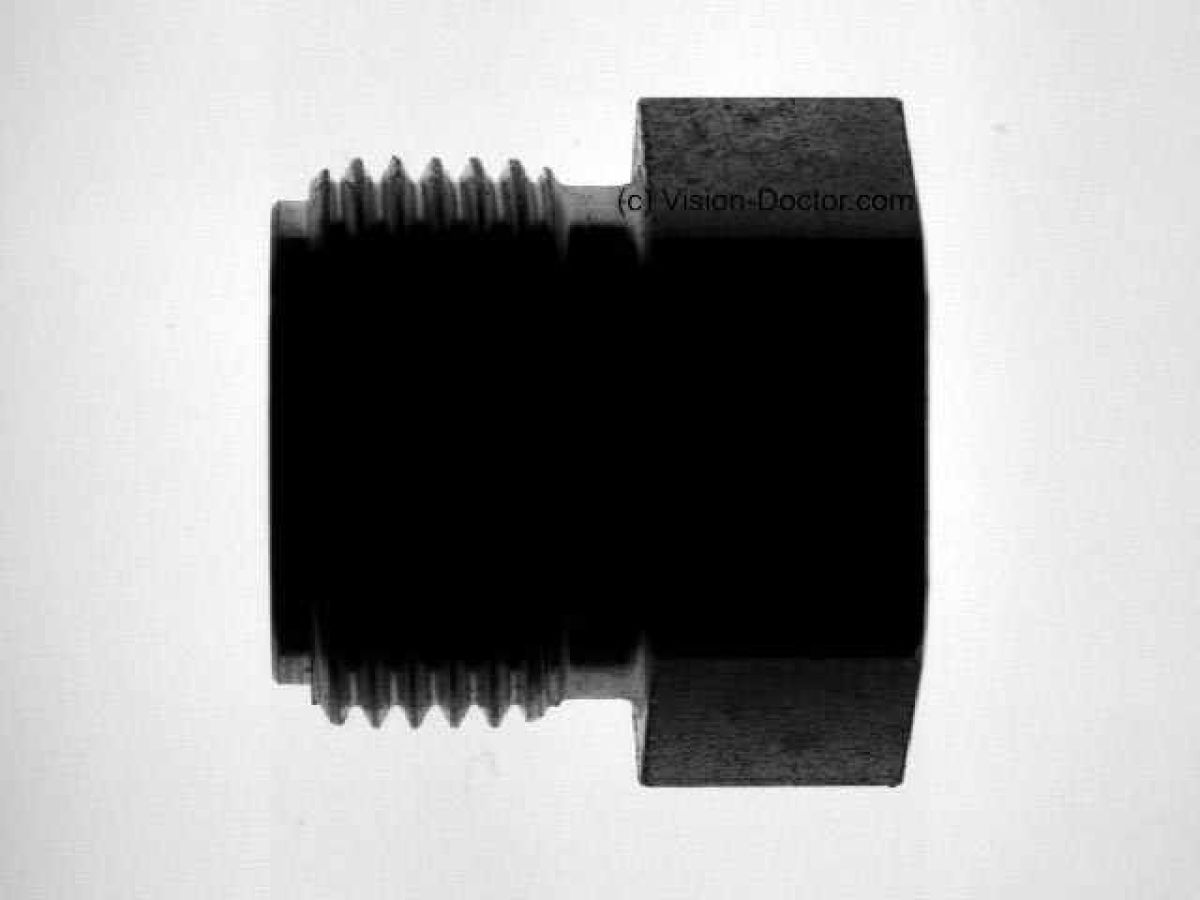
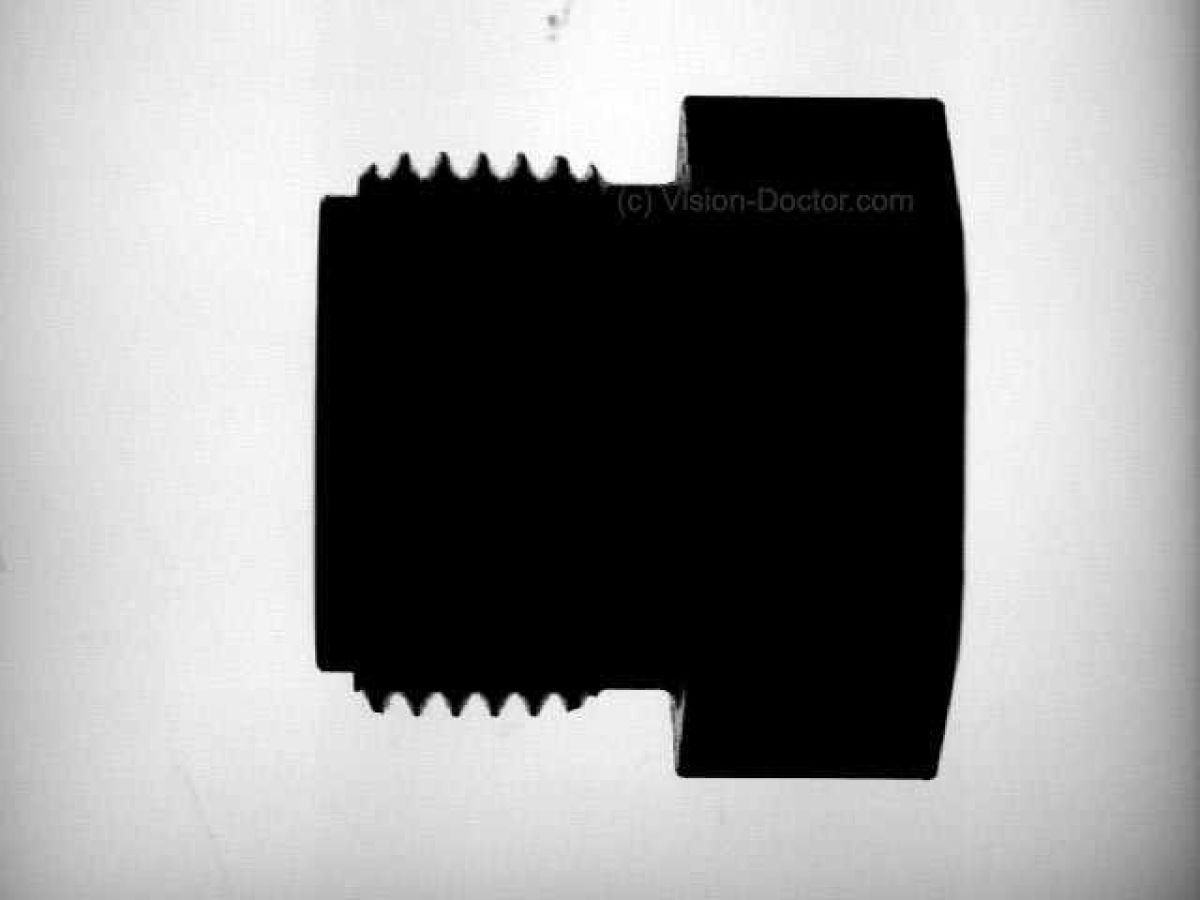
By using a polarizing filter on backlight and optics, the test object can be partially darkened by means of the effect of photoelasticity in case of transparent, hard plastics. Particularly highly transparent materials hardly generate any contrast in transmitted light, which is required to find the object or edges. This technique serves to increase the contrast and enhance an evaluation.

Slightly toned transparent part generates low contrast values
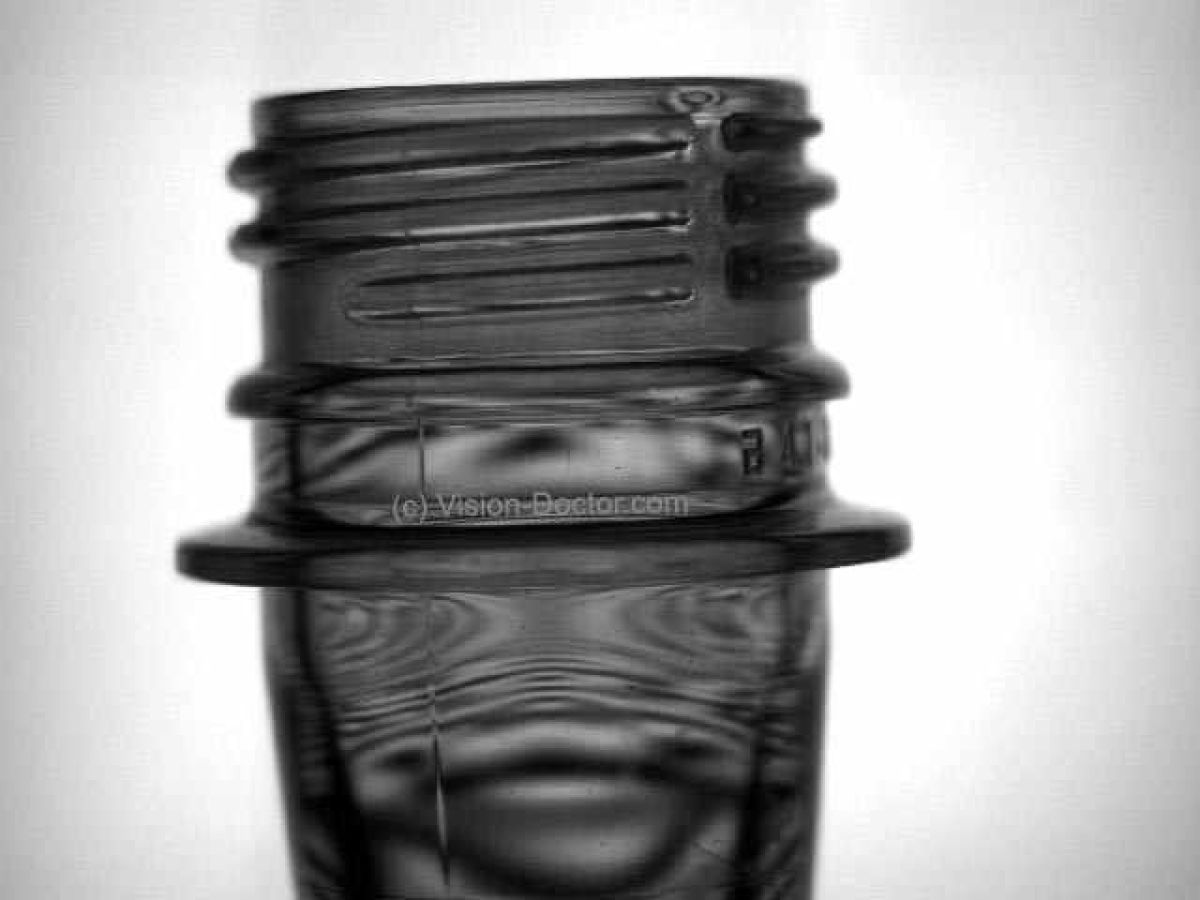
Backlight with polariziing film and pol. filter on optics creates good contrasts. Mechanical stress distribution visible.
Transparent and semi-transparent objects in particular are illuminated in transmitted light, there is hardly any contrast and the test object can hardly be analysed.
If short-wave light is used, it scatters more than comparable long-wave light due to the shorter wavelength of the light. In this case, the use of blue light instead of red light produced over 10 per cent more contrast.
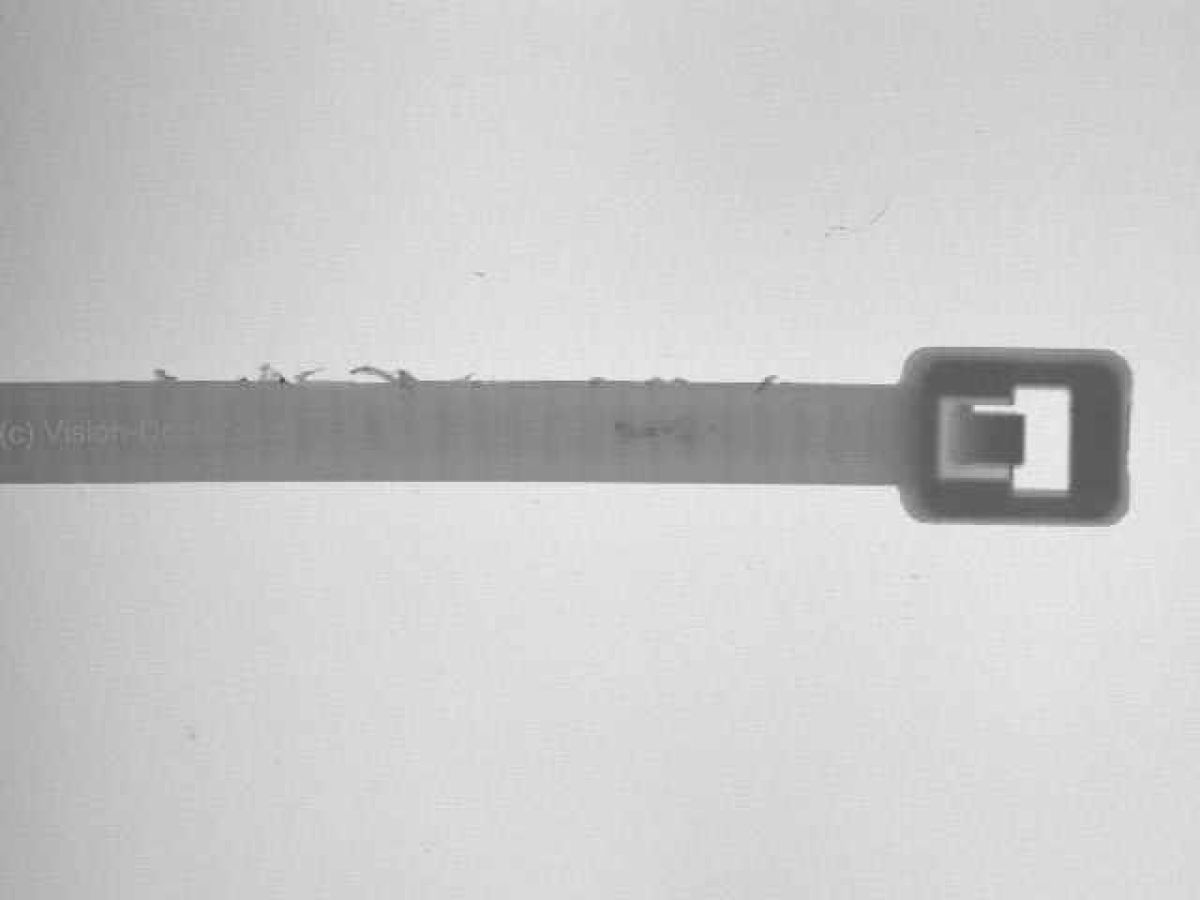
Semi-transparent cable tie generated brightness contrast of 35 percent measured in the middle of object.

Semi-transparent cable tie generated brightness contrast of 47 percent measured in the middle of object with the help of blue light.
Vision-Doctor.com is a private, independent, non-commercial homepage project and not a technology provider or system integrator. Suitable technologies and further professional support can be obtained from the companies & partners listed below.
If necessary, I will be happy to provide a quick recommendation, contacts and brief information.
